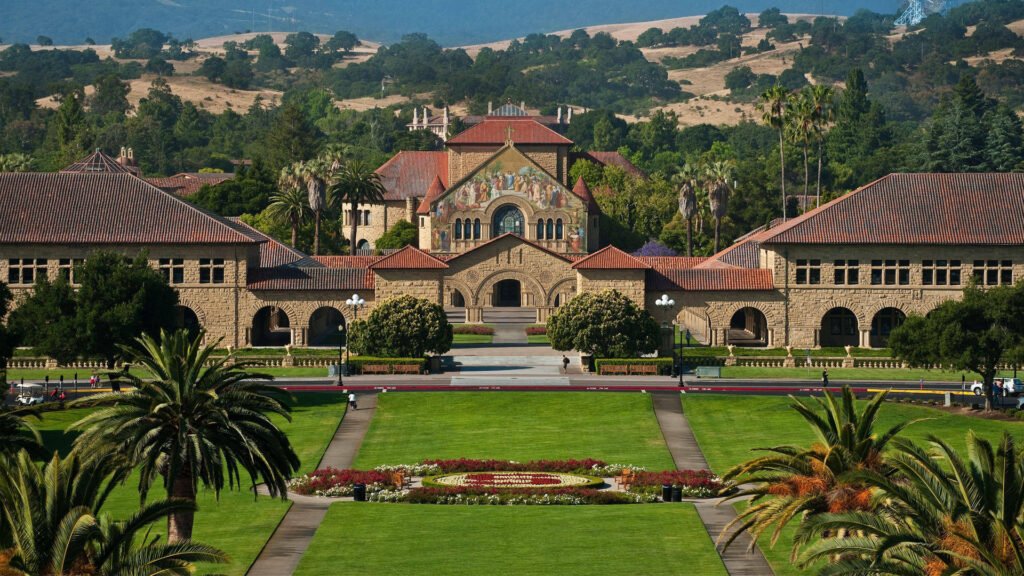Stanford University is more than just an educational institution. It is a hub of innovation, a symbol of academic excellence, and a launching pad for future leaders, thinkers, entrepreneurs, and changemakers. Located in the heart of California’s Silicon Valley, Stanford has played a crucial role in shaping the modern world—particularly in science, technology, business, and public service.
Founded in 1885, Stanford University has consistently ranked among the top universities globally. With its cutting-edge research facilities, distinguished faculty, world-class alumni network, and a culture that nurtures creativity and entrepreneurship, Stanford is a dream destination for students across the world.

This article explores everything you need to know about Stanford University—from its rich history and prestigious programs to campus life, admissions process, scholarships, global impact, and much more.
Why Stanford University Is Considered One of the Best
Stanford consistently appears in the top 5 of global university rankings. But what really sets it apart?
- Located in the tech capital of the world, Silicon Valley
- Home to 20 Nobel laureates, 30 living billionaires, and 17 astronauts among its alumni
- Emphasis on interdisciplinary learning and research
- State-of-the-art labs, centers, and institutes
- Renowned startup ecosystem—over 39,000 companies founded by Stanford alumni
- Strong values of diversity, inclusion, and sustainability
These are not just numbers—they represent a culture of excellence and impact that few other institutions can match.
A Brief History of Stanford University
Stanford was founded by Leland and Jane Stanford in memory of their only child, Leland Jr., who died at the age of 15. The university opened its doors in 1891 with a clear mission: “The children of California shall be our children.”
In its early years, Stanford stood out for its commitment to co-education and nonsectarian learning—values that were rare at the time. Since then, it has evolved into a global powerhouse, setting standards in research, technology, medicine, law, and liberal arts.
Schools and Academic Programs at Stanford
Stanford has seven academic schools, each offering top-tier undergraduate, graduate, and doctoral programs:
- School of Humanities and Sciences
- School of Engineering
- School of Earth, Energy & Environmental Sciences
- Graduate School of Business (GSB)
- School of Law
- School of Medicine
- Graduate School of Education
Each school has multiple departments and research units. Whether you’re interested in literature, neuroscience, artificial intelligence, or environmental justice, Stanford offers something for every passionate learner.
Most Popular Programs:
- Computer Science
- Mechanical Engineering
- Economics
- Political Science
- Biomedical Engineering
- Psychology
- Artificial Intelligence and Machine Learning
- Data Science
- Law and Legal Studies
- MBA and Executive Education
Admissions: What It Takes to Get In
Getting into Stanford is incredibly competitive, but not impossible. The university looks for well-rounded, intellectually curious students who demonstrate leadership, passion, and the ability to make a positive impact.
Acceptance Rate: Around 3.7% (varies yearly)
Average SAT Score: 1470–1570
Average ACT Score: 33–35
GPA Requirement: 3.96 (average weighted)
Admission Requirements:
- Completed application via Common App or Coalition App
- Official transcripts
- SAT/ACT scores (optional in some years)
- Essays and short questions
- Letters of recommendation
- Extracurricular achievements
- Optional interview
Stanford also offers need-blind admissions for U.S. students and need-aware admissions for international applicants.
Financial Aid and Scholarships
Stanford is committed to making education affordable and accessible. Its generous financial aid policy ensures that students from all backgrounds can attend.
Key Highlights:
- Families with incomes below $100,000 pay zero tuition
- Families earning under $150,000 may receive significant aid
- Aid packages include grants, not loans
- Stanford meets 100% of demonstrated financial need
- Scholarships are available for merit, research, leadership, and sports